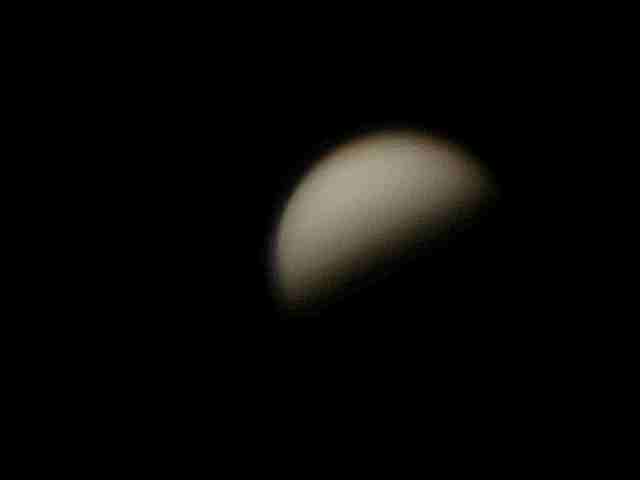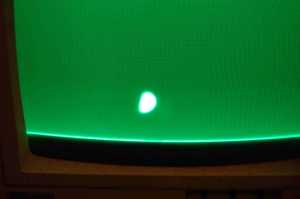Copyright 2008 Starry Mirror



The
TM
Astronomy From West Virginia
VENUS AND THE ASHEN LIGHT IN EARLY 2009
BRIDGEPORT, WV (S-M) - Venus is high in the sky after sunset this Winter of 2009, and we have been keeping watch on the bright planet every clear evening.
Through a telescope, Venus looks like a little Moon. Right now, it is just becoming a crescent, and is growing larger as the crescent shape becomes thinner and more pronounced. Because the planet is shrouded in a carbon dioxide atmosphere, we can't see any surface detail, and details in the bright clouds are quite difficult to see. Since it is closer to the Sun than our Earth, Venus can never be overhead in our skies, and so we always see it through much turbulent air. An object as bright as Venus usually appears as if it is seen through boiling water.
It's still interesting to view the planet. Even though space probes have visited the planet and mapped its surface, there remain many unknowns. One of the oddest phenomena is the "Ashen Light," the tendency of the dark part of the planet to appear faintly lit. Many will have seen a similar appearance of our own Moon when it is a thin crescent and yet the night regions can be clearly seen. In the Moon's case, this is due to sunlight which is reflected off the Earth and illuminates the regions of the Moon which are in darkness.
For Venus, which lacks a Moon, no such explanation is possible, and some have speculated that the glow is caused by electrical activity in the Venusian atmosphere. Others have claimed that the glow is a figment of astronomers' imaginations. If so, then our imaginations were working overtime on the evening of January 24, as we could clearly see the dark side of Venus in a 10.2 inch Maksutov telescope and the planet sometimes appeared as a complete ball.
Also visible recently have been extensions of the cusps at the ends of the crescents. The light of the bright side seems to bleed into the dark regions, and this is probably due to refraction within Venus' atmosphere. This was particularly apparent around the southern pole on January 24.
Depending upon how low one's horizon is, it may be possible to watch Venus until well into April. It will become a larger and thinner crescent, and the crescent shape will be visible in some binoculars before the planet disappears into the twilight glow this Spring, only to reappear as a crescent in the morning sky in early Summer. - GW

This is an image of Venus as seen from our observatory on January 24, 2009. When looking through the telescope, the planet actually looks much brighter, like a mirror.

It is fun to watch Venus dance in the turbulence on a video monitor in the observatory.